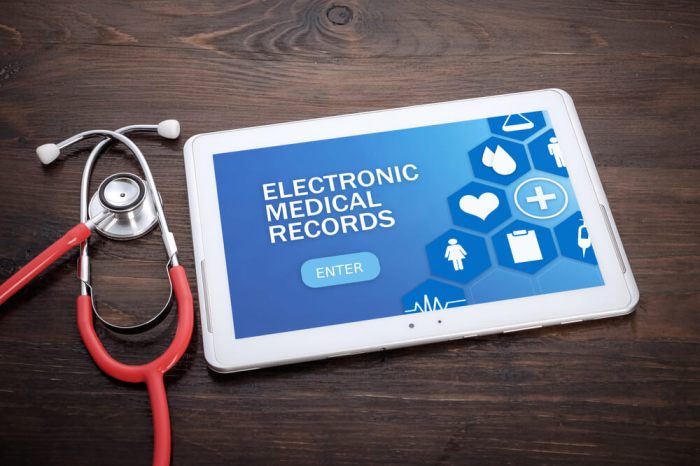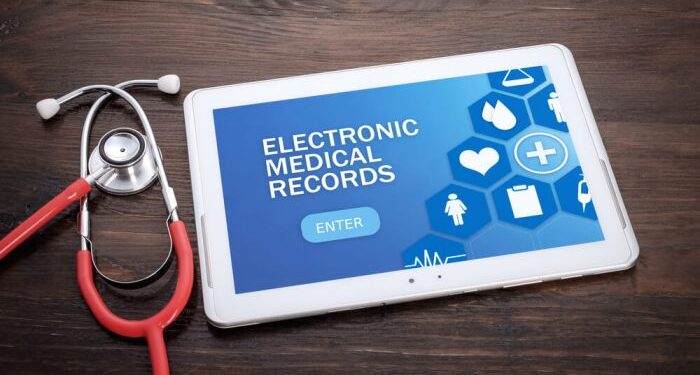Embarking on the journey of exploring The Role of Health IT in Electronic Medical Records (EMR), we delve into a world where technology intersects with healthcare, revolutionizing the way patient data is managed and accessed.
As we navigate through the realm of Health IT and EMR systems, we uncover the intricate web of benefits, challenges, and solutions that shape the landscape of modern healthcare.
Overview of Health IT in EMR

Health IT plays a crucial role in the management and utilization of Electronic Medical Records (EMR) within healthcare settings. It involves the use of technology to store, share, and analyze patient health information efficiently.Health IT systems are utilized in various ways to manage EMR data.
For example, electronic health record (EHR) systems allow healthcare providers to access and update patient records digitally, eliminating the need for paper-based files. Additionally, Health Information Exchange (HIE) platforms enable the secure sharing of patient information among different healthcare organizations, improving care coordination.The integration of Health IT into EMR systems is significant for healthcare providers as it enhances decision-making, streamlines workflows, and improves patient outcomes.
By leveraging technology to access real-time data, healthcare professionals can make more informed treatment decisions and provide personalized care to patients.
Benefits of Integrating Health IT in EMR
- Improved accuracy and efficiency in documenting patient information.
- Enhanced communication and collaboration among healthcare teams.
- Facilitates data analytics for population health management.
- Enables patients to access their health records electronically.
Benefits of Health IT in EMR
Health IT plays a crucial role in enhancing Electronic Medical Records (EMR) systems, offering various benefits that ultimately improve patient care and outcomes.
Enhanced Efficiency and Accuracy
Implementing Health IT in EMR significantly improves the efficiency and accuracy of recording and accessing patient information. By digitizing medical records, healthcare providers can easily input, update, and retrieve data, reducing the chances of errors commonly associated with manual record-keeping.
Improved Patient Care and Outcomes
Health IT contributes to enhancing patient care and outcomes through EMR by enabling healthcare providers to access comprehensive patient data promptly. This access allows for quicker diagnoses, more informed treatment decisions, and better coordination of care among different healthcare providers involved in a patient's treatment.
Challenges in Implementing Health IT in EMR
Implementing Health IT in Electronic Medical Records (EMR) can present various challenges for healthcare organizations. These obstacles can range from technical issues to operational inefficiencies, all of which can hinder the successful integration of Health IT into EMR systems.
Technical Challenges
- Lack of interoperability between different systems, leading to data silos and difficulty in sharing patient information.
- Integration with existing EMR systems, which may require significant customization and updates to ensure compatibility.
- Data security and privacy concerns, particularly regarding the protection of sensitive patient information from cyber threats.
Operational Challenges
- Resistance to change from healthcare staff who may be accustomed to traditional paper-based processes, requiring extensive training and support.
- Workflow disruptions during the transition period, impacting patient care and efficiency within the healthcare organization.
- Budget constraints that limit the resources available for investing in Health IT infrastructure and staff training.
Strategies to Overcome Challenges
- Engage key stakeholders, including healthcare providers, IT staff, and administrators, in the planning and implementation process to ensure buy-in and support.
- Provide comprehensive training programs to educate staff on the benefits of Health IT and address any concerns or resistance to change.
- Conduct thorough testing and pilot programs to identify and address any technical issues before full implementation across the organization.
- Implement robust cybersecurity measures to safeguard patient data and comply with regulatory requirements, such as HIPAA.
Security and Privacy Concerns with Health IT in EMR
Data security and patient privacy are paramount when it comes to Health IT systems for Electronic Medical Records (EMR). Storing sensitive medical information electronically poses various risks and vulnerabilities that need to be addressed to ensure the confidentiality and integrity of patient data.
Importance of Data Security and Patient Privacy
- Unauthorized access: Without proper security measures, there is a risk of unauthorized individuals gaining access to patient records, leading to breaches of confidentiality.
- Data breaches: Inadequate security can result in data breaches, compromising the sensitive information of patients and potentially causing harm.
- Legal implications: Failure to protect patient data can result in legal consequences, including fines and damage to the reputation of healthcare organizations.
Potential Risks and Vulnerabilities
- Malware attacks: EMR systems are susceptible to malware attacks that can compromise the security of patient data.
- Insider threats: Employees with access to EMR systems may abuse their privileges and misuse patient information for personal gain.
- Data loss: Technical failures or system crashes can lead to the loss of patient data if proper backups are not in place.
Best Practices and Measures for Safeguarding Patient Data
- Encryption: Implementing encryption techniques can help protect patient data in transit and at rest, ensuring that only authorized individuals can access the information.
- Access controls: Setting up role-based access controls can limit the information that each user can view or modify, reducing the risk of unauthorized access.
- Regular audits: Conducting regular security audits and risk assessments can help identify vulnerabilities and address them proactively.
Final Thoughts
In conclusion, the fusion of Health IT with Electronic Medical Records presents a promising path towards enhanced patient care, streamlined processes, and fortified data security. As we look ahead, the synergy between technology and healthcare continues to pave the way for a more efficient and effective medical landscape.
FAQ Insights
What are the key benefits of integrating Health IT into Electronic Medical Records?
Health IT enhances data accuracy, streamlines record-keeping processes, and improves patient care outcomes through efficient information access.
What are some common challenges faced when implementing Health IT in EMR systems?
Organizational resistance, technical complexities, and interoperability issues are common obstacles encountered during Health IT integration in EMR systems.
How can healthcare providers ensure data security and patient privacy when using Health IT for EMR?
Implementing robust encryption measures, regular security audits, and staff training on data protection protocols are crucial steps to safeguard patient information in Health IT systems.


